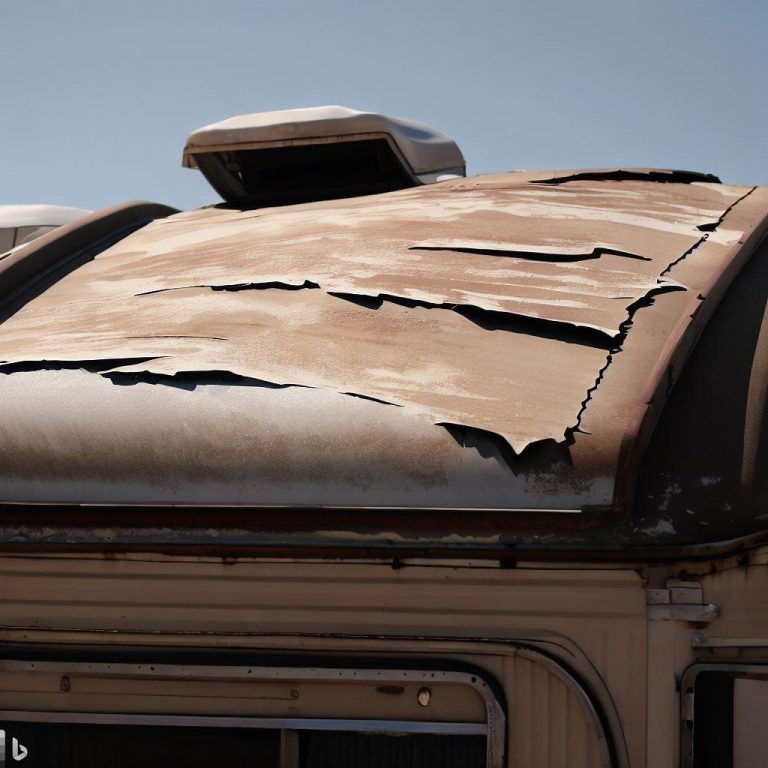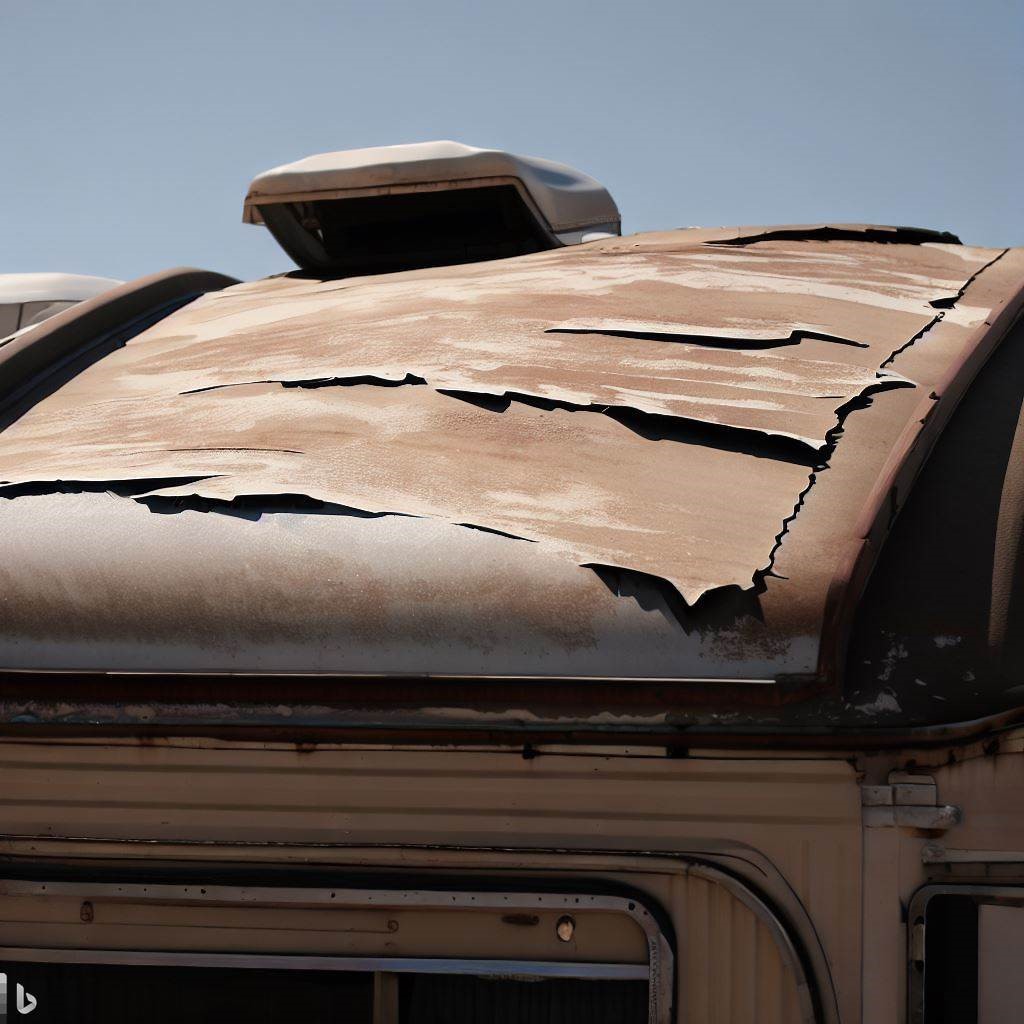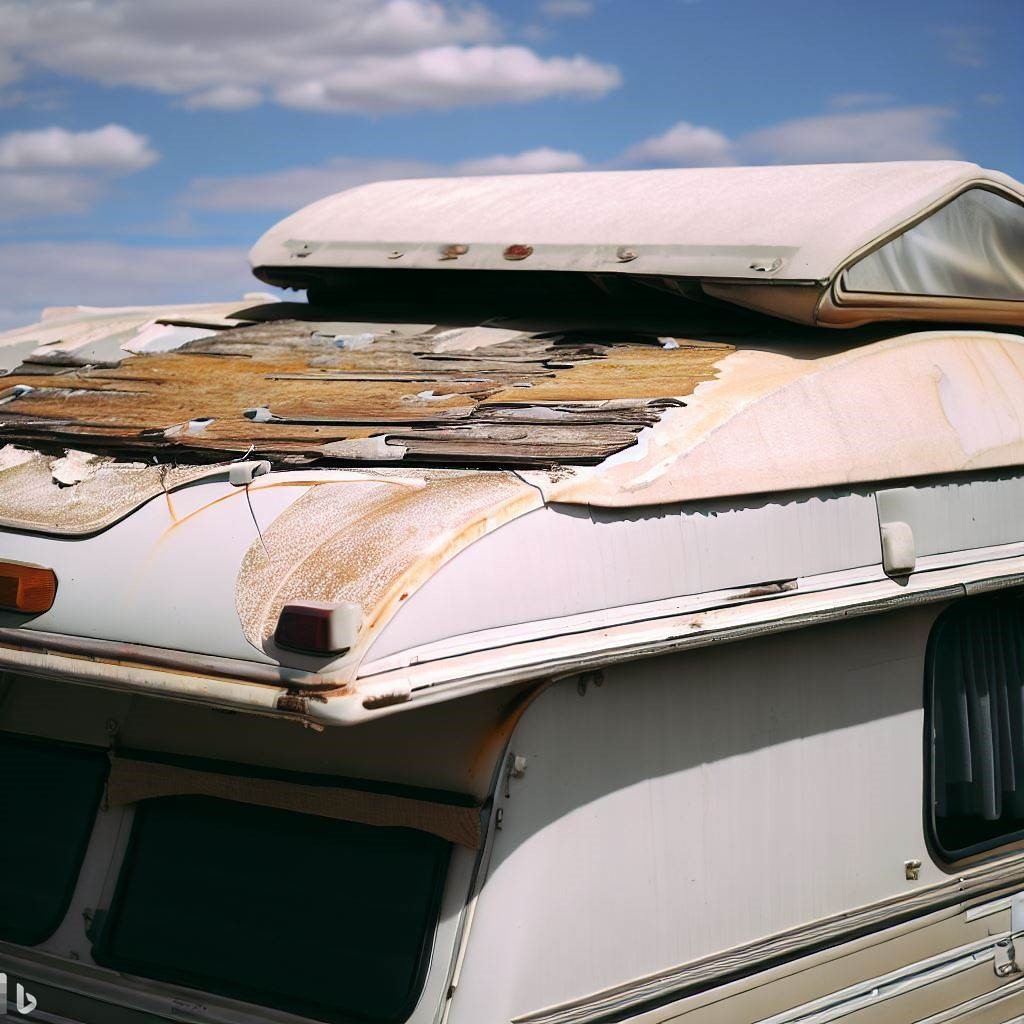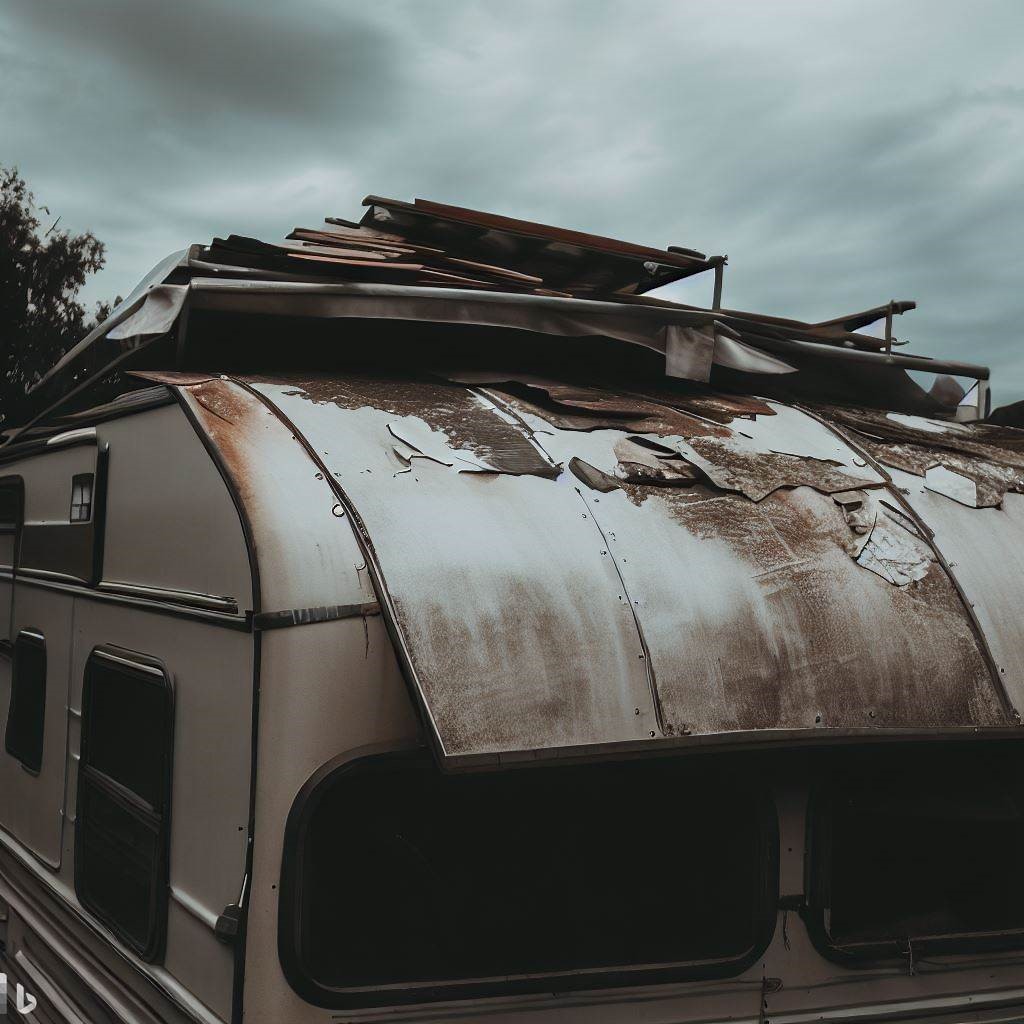
Signs Your RV Roof Needs Replacing: A Comprehensive Guide
Introduction:
The roof of your RV plays a crucial role in protecting your vehicle from the elements. Over time, wear and tear can take a toll on the roof, potentially leading to leaks and structural damage. It’s important to be able to identify signs that indicate your RV roof may need replacing. By recognizing these signs early on, you can address the issue promptly and prevent further damage. In this comprehensive guide, we’ll explore the key indicators that suggest your RV roof requires replacement, enabling you to take appropriate action to maintain the integrity of your vehicle.

Visible Damage and Deterioration:
Inspecting the condition of your RV roof regularly is essential to identify visible signs of damage or deterioration. Look for cracks, splits, or punctures in the roof membrane, as these can allow water to penetrate and cause leaks. Pay attention to any areas where the roof material appears to be bubbling, peeling, or sagging, as this indicates a breakdown in its protective properties. Additionally, look for signs of mold, mildew, or discoloration, as these can suggest water intrusion. Keep an eye out for loose or missing caulking around roof vents, skylights, and seams, as these can be potential entry points for water.

Leaks and Water Intrusion:
Water leaks are a clear indication that your RV roof may need replacing. Check the interior of your RV for any signs of water stains, dampness, or musty odors. Inspect the ceiling, walls, and corners for discoloration or peeling wallpaper, as these can be indicators of water intrusion. During rainfall, pay close attention to any signs of water dripping or pooling inside your RV. It’s crucial to address leaks promptly to prevent further damage to the interior components and structure of your vehicle.

Structural Integrity and Sagging:
An RV roof that has lost its structural integrity can pose significant risks. Inspect the roof for signs of sagging or areas where it feels soft or spongy underfoot. These can indicate damage to the roof structure, potentially compromising its stability and increasing the risk of collapse. Additionally, check for signs of rot or deterioration in the underlying roof framework, such as visible wood damage or insect infestations. A weakened or compromised structure is a clear indication that your RV roof requires immediate attention.
Age and Maintenance History:
Consider the age of your RV roof and its maintenance history when assessing its condition. Most RV roofs have a lifespan of around 10 to 20 years, depending on the material and maintenance practices. If your roof is approaching or has surpassed its expected lifespan, it may be time to consider a replacement. Take into account the frequency and quality of roof maintenance, such as regular inspections, cleaning, and resealing. If your roof has been neglected or hasn’t received proper care, it may be more susceptible to damage and require replacement sooner.
Professional Roof Inspection:
If you’re unsure about the condition of your RV roof or have noticed concerning signs, it’s advisable to seek a professional roof inspection. A qualified RV service technician or a roofing specialist can conduct a thorough evaluation of your roof, identifying any underlying issues that may not be visible to the untrained eye. They can provide expert advice and guidance on whether your RV roof requires repair or replacement based on their assessment.

Conclusion:
Recognizing the signs that indicate your RV roof needs replacing is crucial for maintaining the integrity of your vehicle and preventing further damage. By regularly inspecting for visible damage, addressing leaks and water intrusion, assessing the structural integrity, considering the age and maintenance